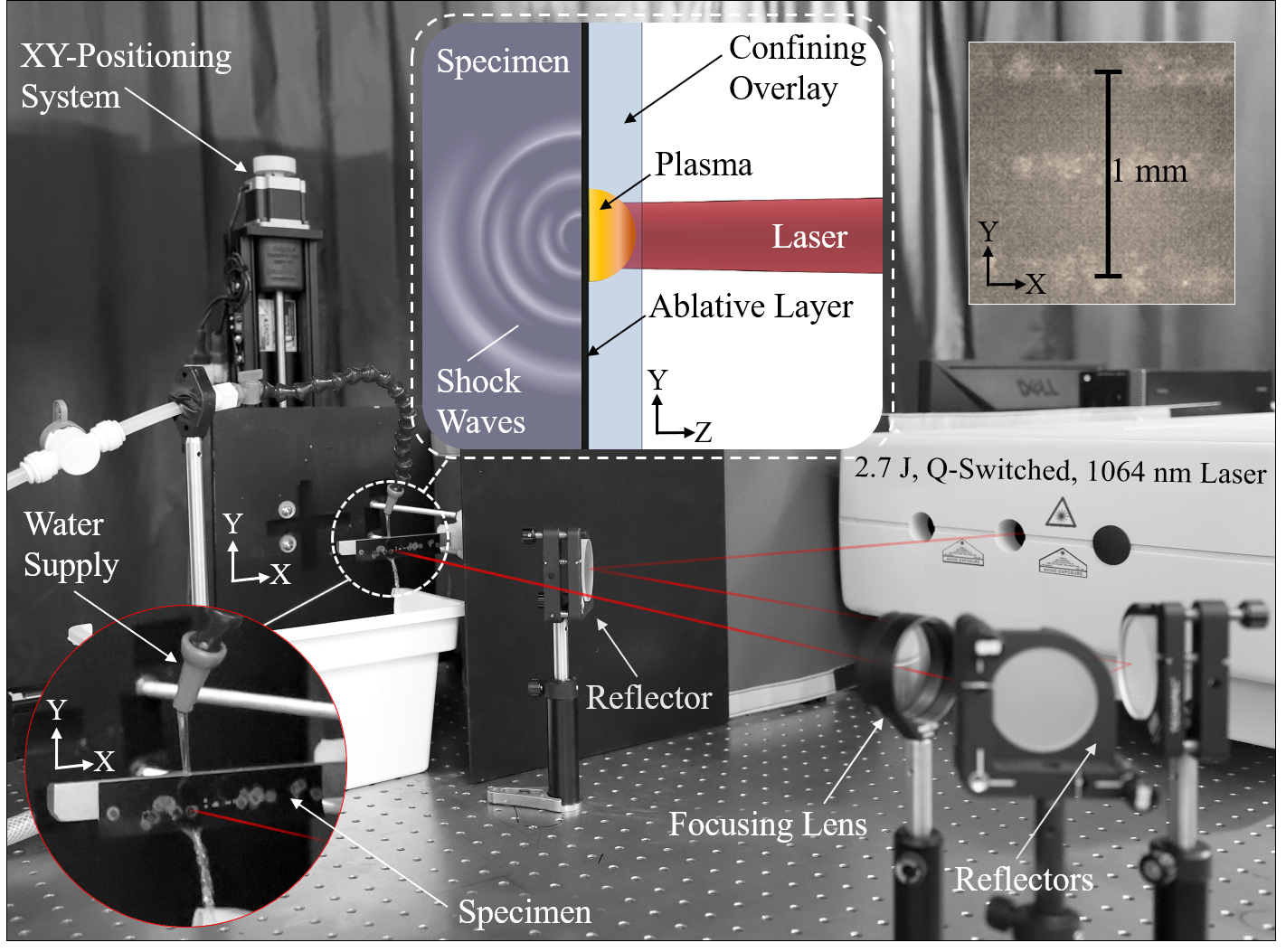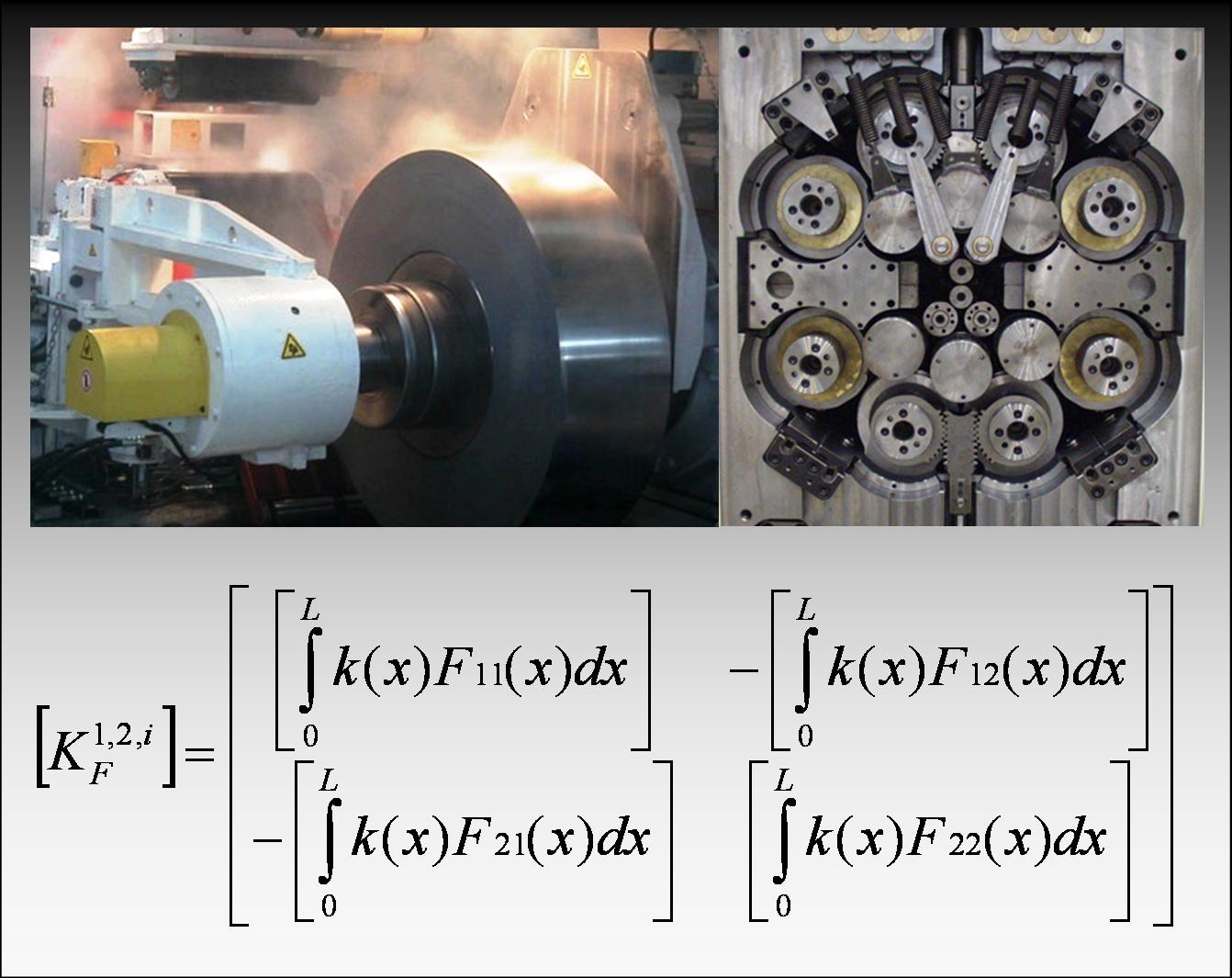Current Projects
Coupling Thermomechanical and Thermo-fluid Physics-Based Models for Metal Additive Manufacturing (LPBF & DED)
- Development of a numerical coupling code to connect the thermomechanical and thermo-fluid physics for metal AM.
- Simulate the stress-strain evolution, along with accurate geometric and thermal reconstruction.
- Neutron diffraction for validation of residual stress in the DED specimens.
- X-Ray micro computed tomography to validate internal voids/porosity.
- 3D surface scanning to validate topographical accuracy of the thermofluidic model.
Improved Tool-Path Design to Reduce Assembly Costs of High-Speed-Machined Wrought and Additively Manufactured Metal Parts
- Crack compliance measurements and neutron diffraction to characterize residual stress random fields in wrought aluminum blocks prior to high-speed machining.
- Integration of 3D mapped residual stress field into finite element machining model.
- Hypothesis testing of whether initial residual stresses in wrought aluminum blocks cause dimensional distortions in the monolithic machined parts to a greater extent than the combined effects due to material removal, tool wear, thermal & dynamic influences.
- Probabilistic algorithms to generate corrected machine tool-paths based on initial residual stress random fields.
- Application to finish-machining of additively manufactured metals.
Computational and Experimental Studies into Laser Shock Peening (LSP) for Enhanced Fatigue Performance of Metallic Components
- Rapid new finite element techniques to simulate residual stress random fields when laser shock peening metallic specimens.
- Simulation of combined additive manufacturing and laser shock peening processes using multi-scale methods.
- Experimental investigations using 1064 nm, 3J nanosecond pulsed Nd-YAG laser (Spectra Physics Quanta Ray PRO-350).
- X-Ray diffraction (XRD) to characterize residual stresses induced by laser shock peening.

LSP surface treatment of aluminum alloy specimen
Highly-Efficient Dynamic Prediction Models for Quality Improvement in Cold Rolling
- Creation of new, rapid finite element computational methods to model roll-stack deformations during the cold rolling of ferrous and non-ferrous metal strip and sheet.
- Prediction of rolled strip thickness and flatness profiles for multiple control devices, including roll bending, roll crowning, and CVC shifting mechanisms, including random field analysis.
- Analysis and identification of new “corrective” roll grinding strategies for ultra-high quality strip flatness.
- Efficient three-dimensional roll chatter vibration modeling in multi-stand cold rolling mills.
- Application to 2-high, 4-high, 6-high, and 20-high mill configurations.
- Structural Dynamics Rolling Mill code from NSF project (contact Dr. Arif Malik at arif.malik@utdallas.edu for code requests).

Cluster Mill
Computational and Experimental Studies into Laser Impact Welding (LIW) of Dissimilar Metallic Materials
- Lagrangian, ALE, and mesh-free computational modeling of various stages of the laser-induced material acceleration and collision phenomena.
- Modeling of laser pulse geometry and energy intensity influences on flyer plate accelerations and deformation dynamics.
- Application and analysis of laser impact welding on bulk metallic glasses (BMG).
- Experimental investigations using 1064 nm, 3J nanosecond pulsed Nd-YAG laser (Spectra Physics Quanta Ray PRO-350).
- Investigations on effects of collision surface topography and metal foil microstructure on transient (sub-microsecond) phenomena along the collision interface.
Bio-inspired fluid structure interaction (FSI) and drag reduction research
Vortices visualization at 10 degrees AoA using vortex λ2 criterion for an UAV wing (Re 80,000)
Show/hide animation
- Efficient FSI modeling (coupled FE structure model and potential flow approach)
- High-fidelity aerodynamic models (DNS/LES) based FSI modeling
- Exploration of superhydrophobic drag reduction on curved surface
- Optimization/morphing of flexible structures
- Experimental studies of actively controlled dielectric elastomer membrane wing
- FSI modeling of dynamic flapping wings
- Potential energy harvest related application

